- JST Home
- /
- Strategic Basic Research Programs
- /
 PRESTO
PRESTO- /
- project/
- Quantum Cooperation between Materials and Information/
- [Quantum Cooperation] Year Started : 2024
[Quantum Cooperation] Year Started : 2024
Ryota Akiyama
Exploration of an ultra-sensitive NV quantum sensor through precise atomic-scale surface control
Grant No.:JPMJPR2451
Researcher
Ryota Akiyama

Assistant Professor
Faculty of Science
The University of Tokyo
Outline
The diamond NV center has a long spin coherence time and its quantum state is sensitive to external fields, so it is attracting attention as a next-generation high-sensitivity quantum sensor. In particular, the NV centers near the diamond surface are important for increasing the sensitivity of sensors, but there are problems such as poor surface environment for NV electrons and short coherence time. In this research, I will solve these problems from a new angle by making full use of surface physics, and I will also explore novel physical phenomena using high-quality surface NV centers.
Hiroaki Ishizuka
Theory of electrical control and measurement of magnetic quantum devices
Grant No.:JPMJPR2452
Researcher
Hiroaki Ishizuka
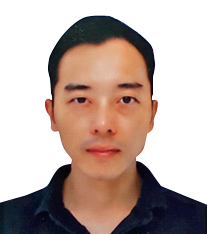
Associate Professor
School of Science
Institute of Science Tokyo
Outline
In this work, we explore the physics and principles of electrical measurement and control of magnetic states such as in skyrmion, soliton, and chiral Kondo systems, with the aim of applying them to quantum devices. Through theoretical studies on magnetic transport phenomena and magnetic dynamics in magnetic metals and semiconductors, we explore the operating principles of quantum devices with high compatibility with existing technologies. The results of this research are expected to contribute to the realization of quantum devices with advantages in miniaturization, integration with conventional electronic devices, and higher operation temperature, as well as to lead to physics and materials science research using qubit devices.
Hisashi Inoue
Development of an Assessment Platform for Topological Quantum Devices
Grant No.:JPMJPR2453
Researcher
Hisashi Inoue
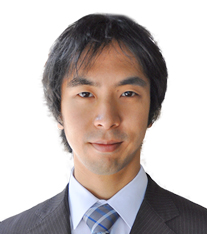
Researcher
Core Electronics Technology Research Institute
National Institute of Advanced Industrial Science and Technology
Outline
Controlling topological quantum states in materials holds great promise for realizing quantum information processing with enhanced error resilience. This research aims to develop advanced devices based on topological insulators and establish a robust platform for evaluating their potential in topological quantum information processing. By combining high-quality device fabrication techniques with time-resolved measurement methods, such as microwave spectroscopy and high-bandwidth switching measurements, we seek to assess the performance and feasibility of these devices for future quantum technologies.
Hideaki Obuse
Universal controle of quantum states by open topological phases
Grant No.:JPMJPR2454
Researcher
Hideaki Obuse

Associate Professor
Faculty of Engineering
Hokkaido University
Outline
We aim to establish a theoretical foundation for the universal control method of quantum state control methods that are not restricted to specific systems by using symmetry and topological phases, which can also be applied to open systems, and promote these concepts. Specifically, we focus on theoretical research on quantum state transport by dynamical control of topological phases, state control of open quantum systems by space-time reversal symmetry, Landau-Zener transitions in open systems, and quantum state transformation based on the Grover algorithm. Furthermore, we propose experimental setups that can be realized in experiments and support experiments from a theoretical perspective.
Yoshifumi Nakata
Exploring quantum information processing in random quantum many-body systems through quantum control
Grant No.:JPMJPR2456
Researcher
Yoshifumi Nakata
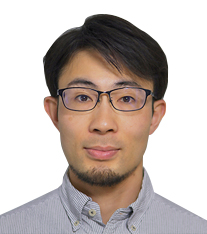
Research associate professor
Yukawa Institute for Theoretical Physics
Kyoto University
Outline
In recent years, quantum information processing using random unitary dynamics in quantum systems has attracted significant attention, and a number of applications have been proposed. In this project, we explore quantum information processing in quantum many-body systems with random interactions by amplifying the randomness of the Hamiltonian dynamics through quantum control. Our focus is to develop novel approaches for quantum error correction based on the Hamiltonian time evolution of random quantum many-body systems and to quantitatively investigate local thermalization phenomena in closed quantum systems with random interactions from a quantum information perspective.
Kazuki Hashimoto
Development of highly-sensitive sub-shot-noise infrared spectroscopy
Grant No.:JPMJPR2457
Researcher
Kazuki Hashimoto
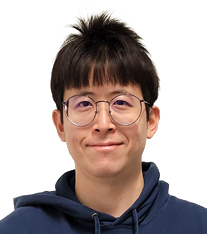
Assistant Professor
School of Science
The University of Tokyo
Outline
In this study, I develop sub-shot-noise infrared spectroscopy. This method obtains the infrared spectrum of a sample at sub-shot-noise amplitude or phase sensitivity by probing the sample’s phase modulation induced by the infrared photothermal effect with a squeezed beam and measuring the probe beam with a nonlinear interferometer. Using this method, I demonstrate a proof-of-concept demonstration with a test sample and aim for 3-dB signal-to-noise ratio improvement compared to the conventional shot-noise-limited spectroscopy methods.
Kenichiro Hashimoto
Verification of chiral superconductors and exploration of anomalous acoustoelectric effect
Grant No.:JPMJPR2458
Researcher
Kenichiro Hashimoto

Associate Professor
Graduate School of Frontier Sciences
The University of Tokyo
Outline
When external fields such as electromagnetic and sound waves are applied to chiral superconductors, two types of bosonic excitations called chirality modes appear within the superconducting gap. Since the chirality modes couple with electromagnetic and sound waves, observing these couplings allows for the verification of chiral superconductivity. In this project, I will use the coupling between the chirality modes and acoustic modes in zero magnetic field (known as the anomalous acoustoelectric effect) to achieve the mutual conversion between electromagnetic and sound waves, enabling new information transmission technologies using chiral superconductors.
Shinsuke Haze
Coherent control of isolated-core ions in alkaline-earth atoms
Grant No.:JPMJPR2459
Researcher
Shinsuke Haze

Associate Professor
Center for Quantum Information and Quantum Biology
The University of Osaka
Outline
We explore coherent manipulation of isolated-core ions in ultracold alkaline-earth atoms. The optical transitions in the core ion is in particular of importance for hybridizing neutral atoms and trapped ions. We aim to remotely entangle the atomic and ionic qubit states via photon-mediated interconnection. Such a novel quantum system is expected to outperform in large-scale and high-fidelity quantum information processing.
Hidetoshi Masuda
Developing spintronic devices based on helimagnetic chirality control
Grant No.:JPMJPR245A
Researcher
Hidetoshi Masuda
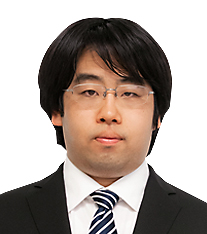
Senior Assistant Professor
Institute for Materials Research
Tohoku University
Outline
Helical magnetic structure, in which the magnetic moments are spirally ordered, shows variety of current-induced phenomena due to the interaction of magnetic moment and electric current. In this project, I will control the helimagnetic chirality (right- or left-handedness of the spiral) and investigate unique current-induced phenomena such as the current-spin conversion and nonreciprocal transport. The project aims to generate a new concept of helimagnet-based spintronics and develop it into information devices based on chirality degree of freedom.
Yuichiro Matsuzaki
Analysis of Many-Body Quantum Entanglement using Cloud Quantum Devices
Grant No.:JPMJPR245B
Researcher
Yuichiro Matsuzaki
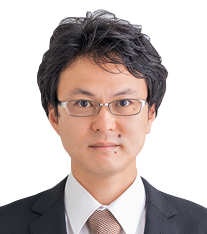
Associate Professor
Faculty of Science and Engineering
Chuo University
Outline
Using the actual devices from D-Wave and QuEra cloud, we will generate many-body quantum entangled states and measure their lifetimes. We will then reproduce the experimental results through simulations on classical computers to understand the interaction between many-body quantum entangled states and the environment. Following this, we will demonstrate new quantum algorithms utilizing many-body quantum entangled states using the cloud devices, as well as showcase quantum sensors that exceed classical limits.
Naoya Morioka
Development of fundamental technologies toward hybrid-type color-center quantum systems based on information transport
Grant No.:JPMJPR245C
Researcher
Naoya Morioka

Associate Professor
Institute for Chemical Research
Kyoto University
Outline
Color centers in semiconductors are promising resource for quantum technologies due to their excellent quantum optical and spin properties. Each color center has different properties, and the hybrid use of multiple types of centers may lead to the realization of quantum information systems with superior functionalities. This study focuses on silicon carbide, which hosts several kinds of color centers with excellent spin-optical properties for quantum applications, and aims to establish a fundamental quantum control technology to realize information transport between the spins of color centers for hybrid use of multiple color centers.
Daisuke Yamamoto
Establishment of a Quantum Simulation Framework Integrating Matter, Information, and Spacetime
Grant No.:JPMJPR245D
Researcher
Daisuke Yamamoto
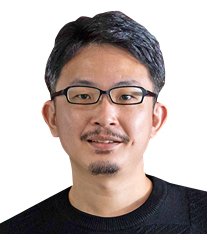
Associate Professor
College of Humanities and Sciences
Nihon University
Outline
This project aims to achieve a concerted understanding of matter, information, and spacetime by creating a quantum simulation framework within the fields of condensed matter theory, gravitational theory, and their integrated domains. Specific research focuses on tabletop quantum simulations of matter (‘artificial quantum matter’) and spacetime (‘tabletop universe’), while simultaneously establishing control protocols for quantum simulators and developing foundational theories for the detection and utilization of new quantum information quantities to realize these goals.













